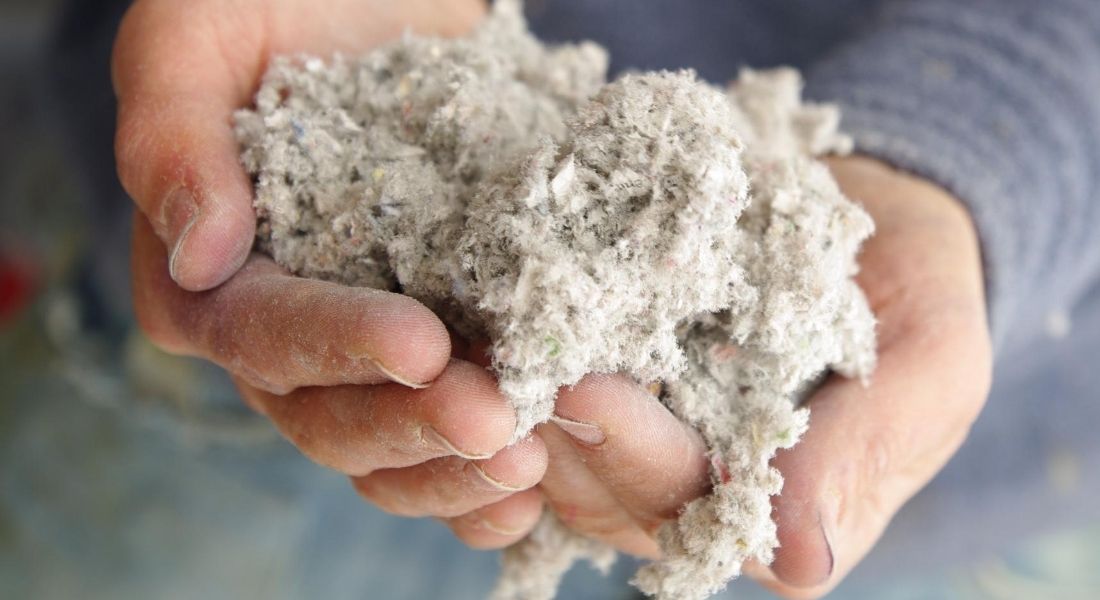
Cellulose insulation stands as a reliable and eco-friendly option for enhancing energy efficiency and thermal comfort in residential and commercial spaces. Composed primarily of recycled paper fibers treated with fire-retardant chemicals, cellulose insulation offers several advantages over conventional insulation materials, making it a popular choice among homeowners and contractors alike to get Radiant barriers houston.
Definition and Composition
Cellulose insulation comprises finely shredded or ground-up paper fibers, typically derived from recycled newspapers, cardboard, or other paper products. These fibers are treated with fire-retardant chemicals, such as boric acid or ammonium sulfate, to enhance their resistance to combustion and prevent the spread of flames. The resulting insulation material boasts excellent thermal insulation properties, providing an effective barrier against heat transfer.
Advantages Over Other Insulation Types
One of the primary advantages of cellulose insulation lies in its superior thermal performance and energy efficiency. Compared to fiberglass insulation, cellulose offers higher R-values per inch of thickness, resulting in better insulation and greater energy savings. Additionally, cellulose insulation is less prone to settling over time, ensuring long-lasting effectiveness and reducing the need for frequent reapplication or replacement.
Applications in Different Areas
Cellulose insulation is versatile in its applications, suitable for use in various areas of the home, including attics, walls, and floors. Its loose-fill form allows for easy installation in attics and wall cavities, conforming to irregular shapes and filling voids to provide consistent insulation coverage. Moreover, cellulose insulation can be blown or sprayed into place, facilitating efficient and cost-effective installation in both new construction and retrofit projects.
Preparation for Installation
Proper preparation is essential for ensuring successful cellulose insulation installation, encompassing thorough assessment, acquisition of necessary tools and equipment, and adherence to safety protocols.
Assessing the Attic or Wall Cavity
Before commencing installation, it is crucial to assess the attic or wall cavity to determine the suitability of cellulose insulation and identify any potential obstacles or obstructions. This involves inspecting the space for existing insulation, assessing the condition of the surfaces, and addressing any moisture or ventilation issues that may affect the installation process.
Necessary Tools and Equipment
To facilitate cellulose insulation installation, several tools and equipment are required, including insulation blowers or sprayers, protective gear such as gloves and goggles, and measuring devices for ensuring accurate coverage. Additionally, access to power sources and adequate ventilation is essential to maintain a safe and efficient work environment throughout the installation process.
Safety Precautions
Safety should be prioritized during cellulose insulation installation to minimize the risk of accidents or health hazards. This includes wearing appropriate personal protective equipment, such as respirators to prevent inhalation of airborne particles, and taking precautions to prevent electrical hazards when working with insulation blowers or sprayers. Moreover, proper ventilation and adherence to manufacturer guidelines for handling and application are essential to ensure the safe and effective installation of cellulose insulation.
Steps for Proper Installation
Achieving optimal results from cellulose insulation installation requires meticulous attention to detail and adherence to recommended procedures to ensure even distribution and maximum coverage.
Preparing the Surface
Before installing cellulose insulation, the surface must be prepared to ensure proper adhesion and insulation performance. This may involve cleaning the attic or wall cavity to remove debris, dust, and other contaminants that could impede adhesion or compromise insulation effectiveness. Additionally, any gaps, cracks, or air leaks should be sealed to prevent thermal bridging and ensure a continuous thermal barrier.
Blowing or Spraying the Cellulose Insulation
The actual installation of cellulose insulation involves blowing or spraying the material into the designated area using specialized equipment, such as insulation blowers or sprayers. The insulation material is distributed evenly throughout the attic or wall cavity, filling voids and gaps to provide uniform insulation coverage. Care should be taken to achieve the desired thickness and density specified by building codes and insulation standards.
Ensuring Even Distribution
Ensuring even distribution of cellulose insulation is essential for maximizing its thermal performance and energy efficiency. Installers should work systematically from one end of the space to the other, applying the insulation material in layers to achieve the desired thickness and density. Attention should be paid to areas with obstructions or irregularities to ensure consistent coverage and minimize thermal bridging.
Benefits of Cellulose Insulation
The installation of cellulose insulation offers a host of benefits beyond its thermal performance, including soundproofing properties, environmental sustainability, and cost-effectiveness.
Thermal Performance and Energy Efficiency
Cellulose insulation provides superior thermal insulation properties, effectively reducing heat transfer and improving energy efficiency in residential and commercial buildings. Its high R-value per inch of thickness enables homeowners to achieve optimal thermal comfort while minimizing heating and cooling costs throughout the year.
Soundproofing Properties
In addition to thermal insulation, cellulose insulation exhibits excellent soundproofing capabilities, reducing noise transmission between rooms and floors. This makes it an ideal choice for homeowners seeking to enhance acoustic comfort and minimize disturbances from external sources, such as traffic or neighboring activities.
Environmentally Friendly Characteristics
Cellulose insulation is an environmentally friendly insulation option, as it is primarily composed of recycled paper fibers and requires minimal energy and resources for production. By diverting waste materials from landfills and reducing the demand for virgin resources, cellulose insulation contributes to sustainability and environmental conservation efforts.
Maintenance and Longevity
While cellulose insulation is known for its durability and longevity, proper maintenance is essential to ensure continued performance and energy efficiency over time.
Regular Inspection and Upkeep
Periodic inspection of cellulose insulation is recommended to identify any signs of settling, moisture intrusion, or damage that may compromise its effectiveness. This may involve visually inspecting the insulation surface, checking for signs of compression or sagging, and addressing any issues promptly to prevent further deterioration.
Addressing Potential Issues
In the event of damage or deterioration, prompt action is necessary to address potential issues and restore the insulation’s performance. This may include adding additional insulation to compensate for settling, repairing damaged areas, or addressing moisture infiltration to prevent mold growth and structural damage.
Extending Lifespan Through Proper Care
By implementing proactive maintenance measures and addressing potential issues promptly, homeowners can extend the lifespan of cellulose insulation and maximize its long-term performance and energy efficiency. This may include maintaining proper ventilation in the attic or wall cavity, ensuring adequate insulation levels, and addressing any structural or environmental factors that may affect the insulation’s integrity.
In conclusion, cellulose insulation installation offers a practical and sustainable solution for enhancing energy efficiency, thermal comfort, and soundproofing in residential and commercial buildings. By understanding the installation process, benefits, and maintenance requirements associated with cellulose insulation, homeowners can make informed decisions to optimize their indoor environment and reduce their environmental footprint for years to come.


